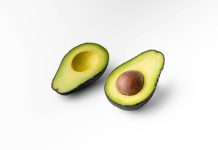
Once upon a time, a group of researchers from the University of Portsmouth uncovered a magical recipe for turning construction rubbish into a lush tomato garden!
This is not a fairy tale but a delightful and surprising discovery by Dr. Muhammad Ali and his team.
These scientists have found a remarkable use for the leftovers of building waste that usually finds its way into the landfills.
And here’s the extra delightful twist – it can nourish the growth of tomatoes!
Construction sites create heaps of debris, consisting of broken bricks, bits of concrete, shattered glass, and other materials that were once parts of buildings and structures.
After a building is demolished or renovated, this waste is sorted through a giant cylinder drum, nicknamed a “trommel.”
This machine acts like a giant sifter, separating larger pieces from smaller bits, ensuring that recyclable materials can be reused.
However, the tiny particles that are too small to be recycled, known as “trommel fines,” usually end up being dumped in landfills since they seem to have no other purpose.
But Dr. Ali saw potential in these overlooked particles.
Trommel fines are like a mishmash of various materials – bits of concrete, fragments of glass, tiny metal particles, and wood splinters, among others. Dr. Ali conducted an experiment where he mixed these trommel fines with compost and used it to grow tomatoes over 70 days.
And voila! He found that by adding just 20% of trommel fines to compost, tomato plants thrived, developing strong roots and robust growth.
Now, why is this discovery so enchanting? Every year, the UK generates a staggering 222 million tons of waste, with a whopping 62% coming from construction and demolition activities. Finding a use for trommel fines means we can not only reduce the waste being sent to landfills but also provide a valuable resource for agricultural practices.
This is like hitting two birds with one stone – managing waste and aiding food production!
Dr. Ali didn’t stop at tomatoes, though. He and his team wondered if these trommel fines could also be useful in making building materials.
In another experiment, they mixed 50% soil with 50% of these waste materials to create compressed earth blocks – a kind of eco-friendly brick. The results were astonishingly positive!
The waste-soil bricks were nearly as strong and durable as those made with soil alone, proving that trommel fines can indeed be useful in construction without compromising the strength of the materials.
This opens up enchanting possibilities. Imagine a world where the remnants from torn-down buildings contribute to erecting new structures and nurturing crops.
It’s like giving the fragments of old buildings a new lease on life, enabling them to be part of new structures and even food that nourishes us. It’s a beautiful circle of life moment, where ending becomes a new beginning.
Dr. Ali’s discovery sheds light on a promising pathway toward more sustainable living.
By finding new uses for what was once considered useless waste, we are a step closer to reducing our impact on the planet, minimizing waste, and promoting a more circular economy where resources are reused and recycled in innovative ways.
As we marvel at the lush green tomato plants, nourished by what was once discarded rubble, we are reminded that with ingenuity and research, we can discover sustainable solutions hidden in the most unexpected places.
Dr. Ali’s work is a testament to the surprising and wonderful possibilities that await when we look at old problems through new lenses, turning trash into treasure… or in this case, into tomatoes and bricks!
Follow us on Twitter for more articles about this topic.
Source: University of Portsmouth.



